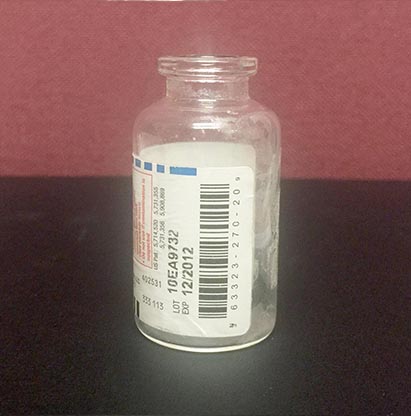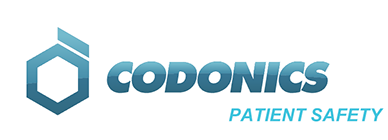National Drug Code (NDC)
Overview
The National Drug Code (NDC) is a universal product identifier for human drugs in the U.S. and one can be found on every parenteral medication that makes its way into a hospital. An NDC contains a unique 10-digit, 3-segment number that identifies the labeler (manufacturer, re-packager or distributor), the product (specific strength, dose and formulation) and the commercial package size (size and type).
The NDC is highly important to a hospital billing system, especially sites who participate in 340B. Medicare claims are required to include the exact NDC of drugs administered to patients or CMS will not provide reimbursements to the hospital. Unfortunately, meeting this requirement is extremely difficult for hospitals. For example, a drug may have several manufacturers and, therefore, several NDC numbers. It’s vital that hospitals report the exact NDC of the administered drug and not another manufacturer’s product, even if the chemical name is the same. With drug shortages becoming “the norm” there’s even greater impact on pharmacy to manage the data, stretching their resources to new lengths.
In the operating room, there are even greater challenges. The most medication-intensive environment in the hospital, where medications are administered (often in rapid succession) first and documented later.

Electronically capture NDCs
There’s just one solution – Codonics. Only Codonics can provide pharmacy with the exact NDC of every medication scanned in the perioperative environment. Without Safe Label System and SLS-WAVE as part of the workflow, hospitals must rely on either manual documentation or an algorithm in the AIMS to select what it thinks is the NDC, not necessarily the correct NDC. By capturing the NDC, we provide pharmacy with a solution from the OR they can rely on — including the exact NDC. Anesthesia can focus on the patient with peace of mind that the documentation is complete and accurate. It’s a win-win.
Integrated with automated anesthesia carts (ADC).
Safe Label System automatically delivers and records a drug’s NDC to ADCs* for accurate inventory and improved charge capture in the OR. Additionally, SLS provides the added value of safety with visual and audible identification of the drug in hand every time a drug is scanned while delivering easy-to-read, TJC-compliant labels on demand.
Benefits for the pharmacy:
- Improves charge capture and billing
- Helps manage inventory in the cart to decrease cycle counting, stock outs and discrepancies
- Helps meet 340B initiatives
- Improves safety and compliance
Benefits for anesthesia:
- Reduces redundant steps enabling more time to focus on the patient
- Assures inventory in the cart to reduce stock outs
- Reduces human errors using barcode technology
- Improves safety and compliance
*SLS common scan integration is offered with some of our partners. Ask your sales representative for details.
Integrated with Anesthesia Information Management Systems (AIMS).
An accessory to SLS PCS, SLS-WAVE is a robust, highly accurate “hands-free” scanner that increases safety and the accuracy of NDC data in the operating room at the time of administration. A quick “wave” of an SLS prepared syringe or most prefilled syringes passes the NDC data electronically to Epic Anesthesia or Plexus Anesthesia Touch. Simultaneously, the AIMS/EHR visually displays the drug name and concentration, allergies to the medication and, just prior to administration to the patient, can electronically document the time the syringe was scanned. The exact NDC of every scanned drug is seamlessly recorded, enabling pharmacy to confidently rely on the anesthesia report and introduces a new level of billing accuracy. SLS-WAVE delivers detailed drug accounting, increased charge capture, and helps with 340B accountability to drastically reduce the amount of time pharmacy spends on manual paperwork.
Benefits for the pharmacy:
- Automatically records exact NDC for improved charge capture, billing accuracy and thorough documentation at administration
- Improves patient outcomes with safety checks at administration
- Saves time by reducing redundant, manual tasks
- Helps OR become consistent with BCMA initiatives throughout the hospital, documenting use and accountability
Benefits for anesthesia:
- Improves workflow by providing fast and reliable “hands-free” scans within arms’ reach
- Increases efficiency by automatically electronically documenting medications at administration
- Improves safety with drug verification and allergy alerts prior to administration
- Automatically records the exact NDC without “clicks”, improving charge capture and documentation accuracy
